Nationality United States | Name Dorothea Tanning Role Writer | |
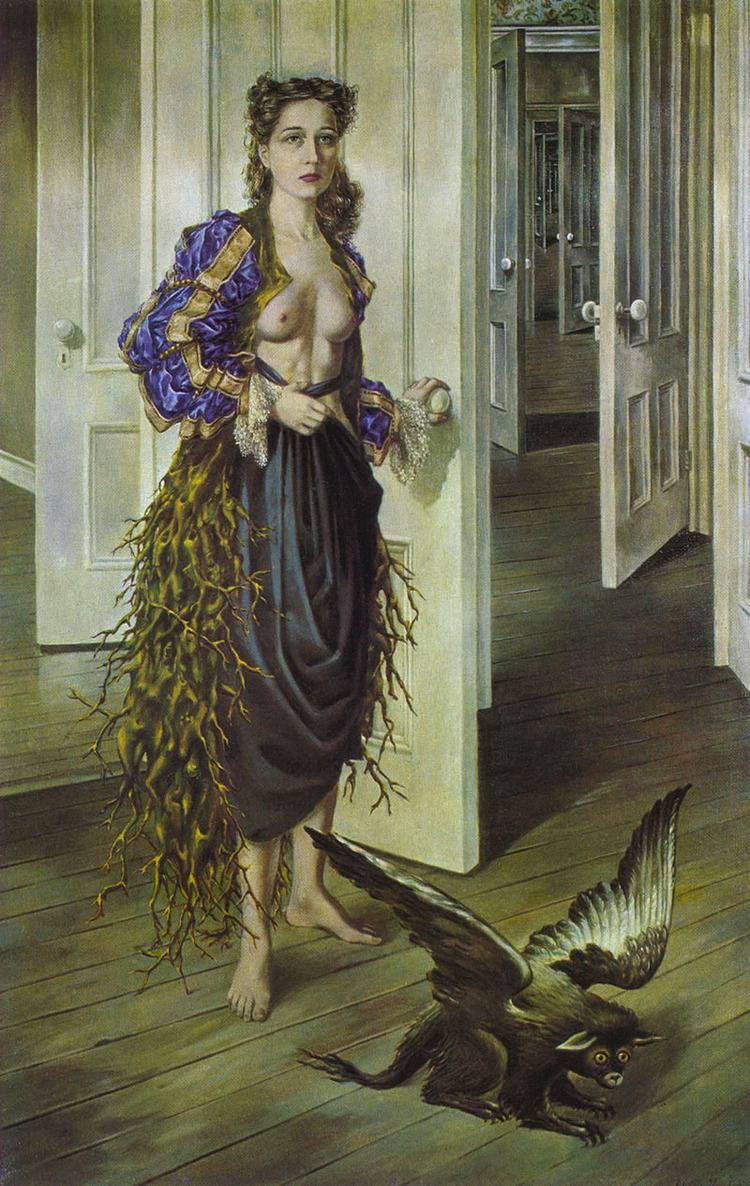 | ||
Known for Painting, sculpture, printmaking, writing Died January 31, 2012, Manhattan, New York City, New York, United States Artwork Insomnias, A Mi-Voix, Some Roses and their Phantoms Similar People Max Ernst, Leonora Carrington, Victor Brauner, Jean Arp, Wifredo Lam | ||
Muse - Dorothea Tanning
Dorothea Margaret Tanning (August 25, 1910 – January 31, 2012) was an American painter, printmaker, sculptor, writer, and poet. Her early work was influenced by Surrealism.
Contents
- Muse Dorothea Tanning
- Dorothea tanning an american artist and surrealist painter
- Biography
- Artistic career
- Literary career
- Quotes
- Public collections
- References

Dorothea tanning an american artist and surrealist painter
Biography
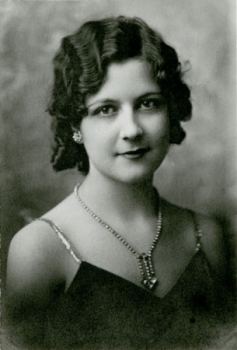
Dorothea Tanning was born and raised in Galesburg, Illinois. In 1926 Tanning attended Galesburg public schools. When she was attending high school Tanning "skipped" two grades, which led to a lifelong weakness in arithmetic. After attending Knox College for two years (1928–30), she moved to Chicago in 1930 and then to New York in 1935. There she supported herself as a commercial artist while pursuing her own painting, and discovered Surrealism at the Museum of Modern Art’s seminal 1936 exhibition, Fantastic Art, Dada and Surrealism. After an eight-year relationship, she was married briefly to the writer Homer Shannon in 1941. Impressed by her creativity and talent in illustrating fashion advertisements, the art director at Macy’s department store introduced her to the gallery owner Julien Levy, who immediately offered to show her work. Levy later gave Tanning two one-person exhibitions (in 1944 and 1948), and also introduced her to the circle of émigré Surrealists whose work he was showing in his New York gallery, including the German painter Max Ernst.

Tanning first met Ernst at a party in 1942. Later he dropped by her studio to consider her work for an exhibition of work by women artists at The Art of This Century gallery, which was owned by Peggy Guggenheim, Ernst's wife at the time. As Tanning recounts in her memoirs, he was enchanted by her iconic self-portrait Birthday (1942, Philadelphia Museum of Art). The two played chess, fell in love, and embarked on a life together that took them to Sedona in Arizona, and later to France. They lived in New York for several years before moving to Sedona, where they built a house and hosted visits from many friends crossing the country, including Henri Cartier-Bresson, Lee Miller, Roland Penrose, Yves Tanguy, Kay Sage, Pavel Tchelitchew, George Balanchine, and Dylan Thomas. Tanning and Ernst were married in 1946 in a double wedding with Man Ray and Juliet Browner in Hollywood and they were married for 34 years.
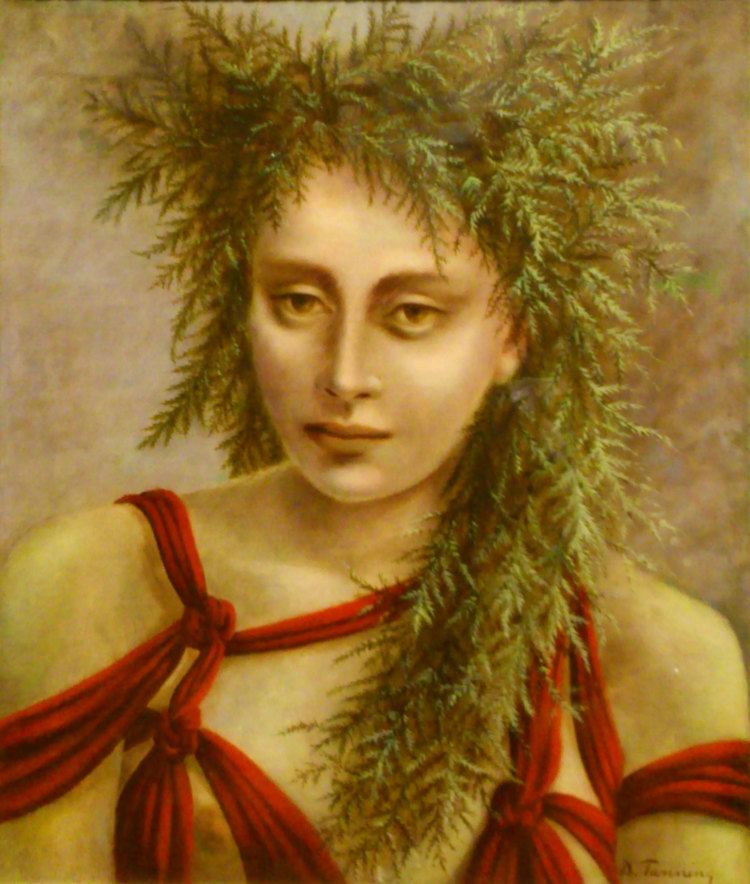
In 1949, Tanning and Ernst relocated to France, where they divided their time between Paris and Touraine, returning to Sedona for intervals through the early and mid 1950s. They lived in Paris and later Provence until Ernst's death in 1976, he had suffered a stroke a year earlier, after which Tanning returned to New York. She continued to create studio art in the 1980s, then turned her attention to her writing and poetry in the 1990s and 2000s, working and publishing until the end of her life. Tanning died on January 31, 2012, at her Manhattan home at age 101.
Artistic career
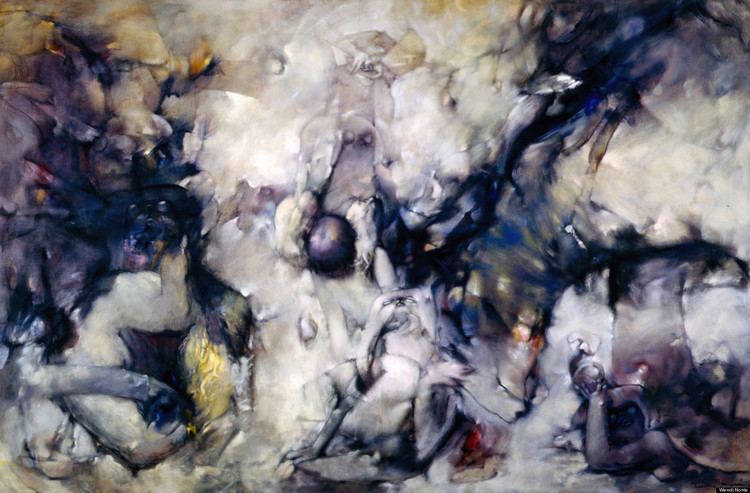
Apart from three weeks she spent at the Chicago Academy of Fine Art in 1930, Tanning was a self-taught artist. The surreal imagery of her paintings from the 1940s and her close friendships with artists and writers of the Surrealist Movement have led many to regard Tanning as a Surrealist painter, yet she developed her own individual style over the course of an artistic career that spanned six decades.
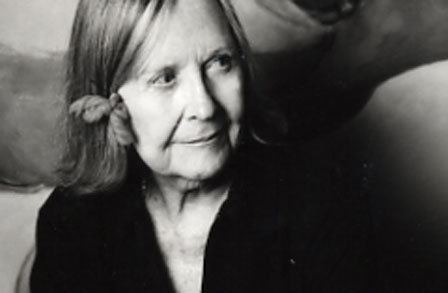
Tanning’s early works – paintings such as Birthday and Eine kleine Nachtmusik (1943, Tate Modern, London) – were precise figurative renderings of dream-like situations. Like other Surrealist painters, she was meticulous in her attention to details and in building up surfaces with carefully muted brushstrokes. In 1943, Tanning was included in Peggy Guggenheim's show Exhibition by 31 Women at the Art of This Century gallery in New York. Through the late 1940s, she continued to paint depictions of unreal scenes, some of which combined erotic subjects with enigmatic symbols and desolate space. During this period she formed enduring friendships with, among others, Marcel Duchamp, Joseph Cornell, and John Cage; designed sets and costumes for several of George Balanchine's ballets, including The Night Shadow (1945) at the Metropolitan Opera House; and appeared in two of Hans Richter's avant-garde films.
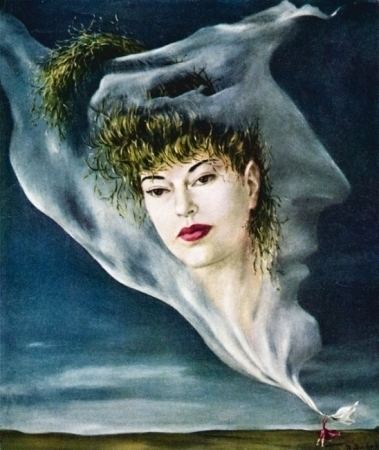
Over the next decade, Tanning's painting evolved, becoming less explicit and more suggestive. Now working in Paris and Huismes, France, she began to move away from Surrealism and develop her own style. During the mid-1950s, her work radically changed and her images became increasingly fragmented and prismatic, exemplified in works such as Insomnias (1957, Moderna Museet, Stockholm). As she explains, "Around 1955 my canvases literally splintered... I broke the mirror, you might say.”
By the late 1960s, Tanning’s paintings were almost completely abstract, yet always suggestive of the female form. From 1969 to 1973, Tanning concentrated on a body of three-dimensional work, soft, fabric sculptures, five of which comprise the installation Hôtel du Pavot, Chambre 202 (1970–73) that is now in the permanent collection of the Musée National d'Art Moderne at the Centre Georges Pompidou, Paris. During her time in France in the 1950s-70s, Tanning also became an active printmaker, working in ateliers of Georges Visat and Pierre Chave and collaborating on a number of limited edition artists’ books with such poets as Alain Bosquet, Rene Crevel, Lena Leclerq, and André Pieyre de Mandiargues. After her husband's death in 1976, Tanning remained in France for several years with a renewed concentration on her painting. These years included, for Dorothea Tanning, an intense five- year adventure in soft sculpture. By 1980 she had relocated her home and studio to New York and embarked on an energetic creative period in which she produced paintings, drawings, collages, and prints.
Tanning's work has been recognized in numerous one-person exhibitions, both in the United States and in Europe, including major retrospectives in 1974 at the Centre National d’Art Contemporain in Paris (which became the Centre Georges Pompidou in 1977), and in 1993 at the Malmö Konsthall in Sweden and the at the Camden Art Center in London. The New York Public Library mounted a retrospective of Tanning's prints in 1992, and the Philadelphia Museum of Art mounted a small retrospective exhibition in 2000 entitled Birthday and Beyond to mark its acquisition of Tanning’s celebrated 1942 self-portrait, Birthday.
Tanning's 100th birthday in 2010 was marked by a number of exhibitions during the year: "Dorothea Tanning – Early Designs for the Stage" at The Drawing Center, New York, USA, "Happy Birthday Dorothea Tanning" at the Maison Waldberg, Seillans, France, "Zwischen dem Inneren Auge und der Anderen Seite der Tür: Dorothea Tanning Graphiken" at the Max Ernst Museum, Brühl, Germany, "Dorothea Tanning: 100 years – A Tribute" at Galerie Bel’Art, Stockholm, and "Surréalisme, Dada et Fluxus - Pour le 100ème anniversaire de Dorothea Tanning" at l'Espace d'Art, Rennes les Bains, France.
Literary career
Tanning wrote stories and poems throughout her life, with her first short story published in VVV (magazine) in 1943 and original poems accompanying her etchings in the limited edition books Demain (1964) and En chair et en or (1973). However, it was after her return to New York in the 1980s that she began to focus on her writing. In 1986, she published her first memoir, entitled Birthday for the painting that had figured so prominently in her biography. It has since been translated into four other languages. In 2001, she wrote an expanded version of her memoir called Between Lives: An Artist and Her World.
With the encouragement of her friend and mentor James Merrill (who was for many years Chancellor of the Academy of American Poets), Tanning began to write her own poetry in her eighties, and her poems were published regularly in literary reviews and magazines such as The Yale Review, Poetry, The Paris Review, and The New Yorker until the end of her life. A collection of her poems, A Table of Content, and a short novel, Chasm: A Weekend, were both published in 2004. Her second collection of poems, Coming to That, was published by Graywolf Press in 2011.
In 1994, Tanning endowed the Wallace Stevens Award of the Academy of American Poets, an annual prize of $100,000 awarded to a poet in recognition of outstanding and proven mastery in the art of poetry.
Quotes
In a 2002 interview for Salon.com in response to: "So what have you tried to communicate as an artist? What were your goals, and have you achieved them?" Tanning replies: "I’d be satisfied with having suggested that there is more than meets the eye." And in response to: "What do you think of some of the artwork being produced today?" Tanning replies: "I can’t answer that without enraging the art world. It’s enough to say that most of it comes straight out of dada, 1917. I get the impression that the idea is to shock. So many people laboring to outdo Duchamp’s urinal. It isn’t even shocking anymore, just kind of sad."
When speaking on her relationship with Ernst in an interview, Tanning said: "I was a loner, am a loner, good Lord, it's the only way I can imagine working. And then when I hooked up with Max Ernst, he was clearly the only person I needed and, I assure you, we never, never talked art. Never."
"If it wasn’t known that I had been a Surrealist, I don’t think it would be evident in what I’m doing now. But I’m branded as a Surrealist. Tant pis."
"Women artists. There is no such thing—or person. It’s just as much a contradiction in terms as “man artist” or “elephant artist.” You may be a woman and you may be an artist; but the one is a given and the other is you."
"Art has always been the raft onto which we climb to save our sanity."
